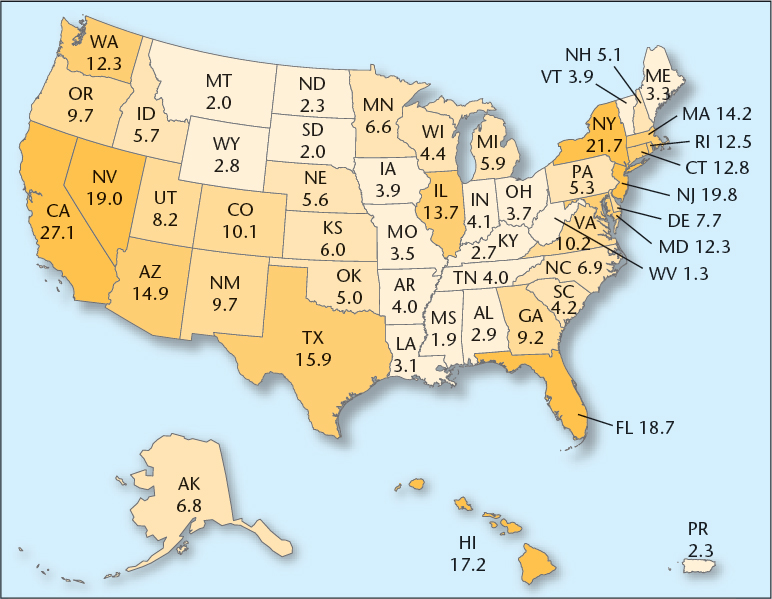Adapt to Diverse Audiences
In the United States, over one-third of the population, or nearly 105 million persons, belongs to a racial or ethnic minority group, or one designated by the U.S. Census Bureau as other than “non-Hispanic White.” Additionally, 38 million people, or 12.8 percent of the U.S. population, are foreign-born (see Figure 6.1). California leads the nation, with 27 percent of its residents foreign-born; New York, New Jersey, and Hawaii follow close behind. Nationwide, nearly 20 percent of the population speaks a language other than English in the home; two-thirds of these speak Spanish.18 Worldwide, there are 195 recognized independent states, and many more distinct cultures within these countries.19 What these figures suggest is that audience members will hold different cultural perspectives and employ different styles of communicating that may or may not mesh with your own.

How might you prepare to speak in front of an ethnically and culturally diverse audience, including that of your classroom? In any speaking situation, your foremost concern should be to treat your listeners with dignity and to act with integrity. You do this by infusing your speech with the pillars of character described in Chapter 5: trustworthiness, respect, responsibility, and fairness. Since values are central to who we are, identifying those of your listeners with respect to your topic can help you to avoid ethnocentrism and deliver your message in a culturally sensitive manner.